This former post office was built in 1928 and served Gosforth and district for more than 50 years. The premises are now named after a respected doctor who had a hand in the early development of Gosforth. At the end of the 18th century, Job Bulman returned from India and built the now-demolished Coxlodge Hall as his home. He also sold plots of land along High Street to build the cottages which were long known as Bulman Village.
An old plan of the Estate at Coxlodge in the County of Northumberland.
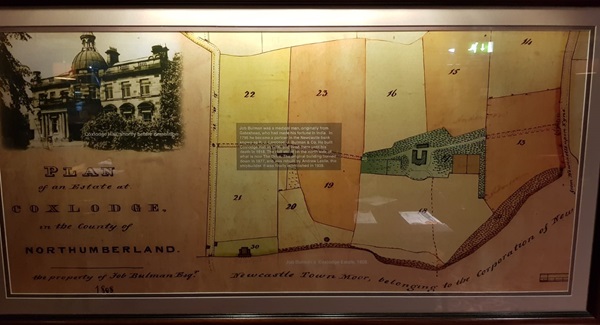
Prints of Gosforth Park and Central Hall.
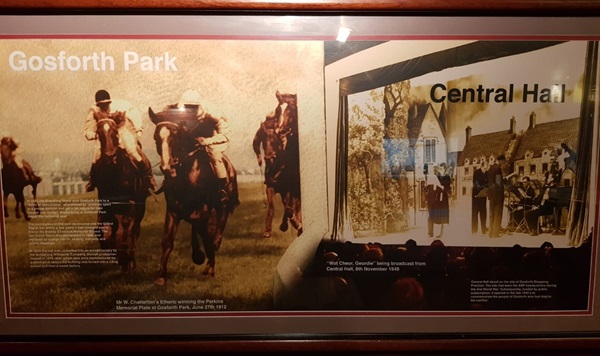
A photograph of Thomas William Bulman.
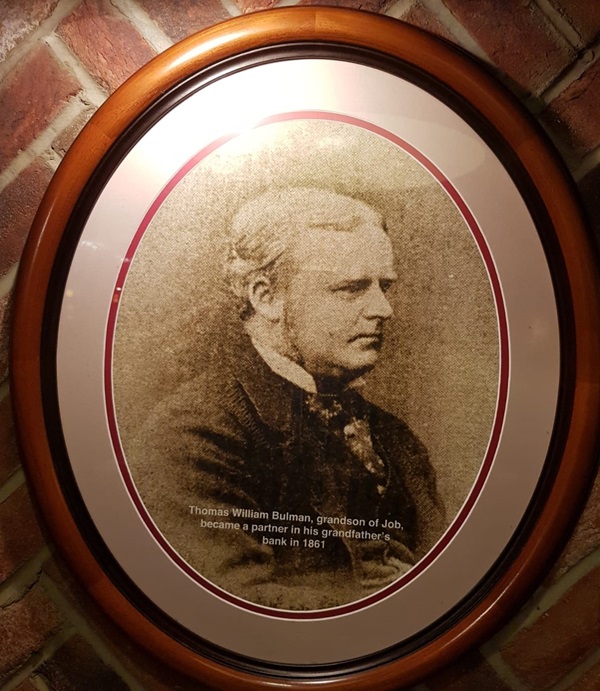
The grandson of Job, became a partner in his grandfather’s bank in 1861.
A photograph and text about John Ward.
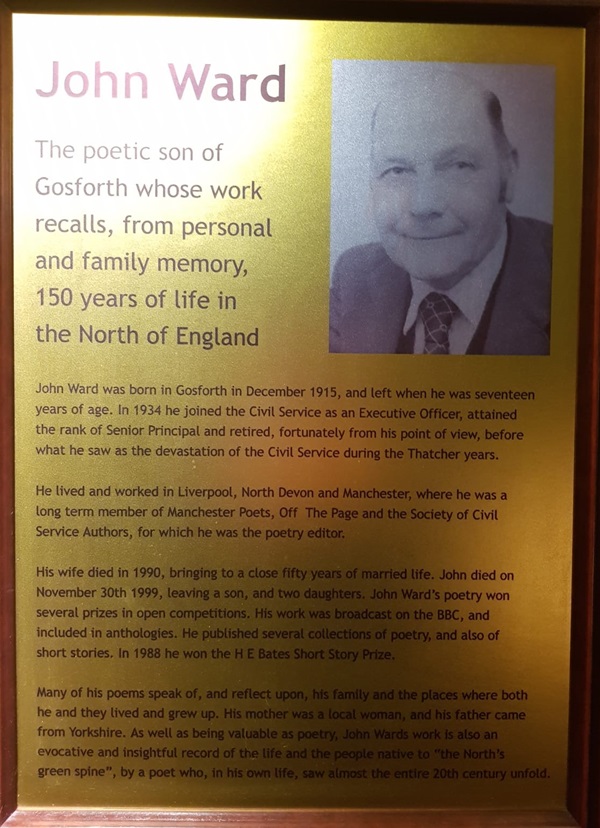
The text reads: The poetic son of Gosforth whose work recalls, from personal and family memory, 150 years of life in the North of England.
John Ward was born in Gosforth in December 1915, and left when he was seventeen years of age. In 1934 he joined the Civil Service as an executive officer, attained the rank of Senior Principal and retired, fortunately from his point of view, before what he saw as the devastation of the Civil Service during the Thatcher years.
He lived and worked in Liverpool, North Devon and Manchester, where he was a long term member of Manchester Poets, Off The Page and the Society of Civil Service Authors, for which he was the poetry editor.
His wife died in 1990, bringing to a close fifty years of married life. John died on November 30 1999, leaving a son, and two daughters. John Ward’s poetry won several prizes in open competitions. His work was broadcast on the BBC, and included in anthologies. He published several collections of poetry, and also of short stories. In 1988 he won the H E Bates Short Story Prize.
Many of his poems speak of, and reflect upon, his family and the places where both he and they lived and grew up. His mother was a local woman, and his father came from Yorkshire. As well as being valuable as poetry, John Wards work is also an evocative and insightful record of the life and the people native to “the North’s green spine”, by a poet who, in his own life, saw almost the entire 20th century unfold.
Prints and text about the silver screen.
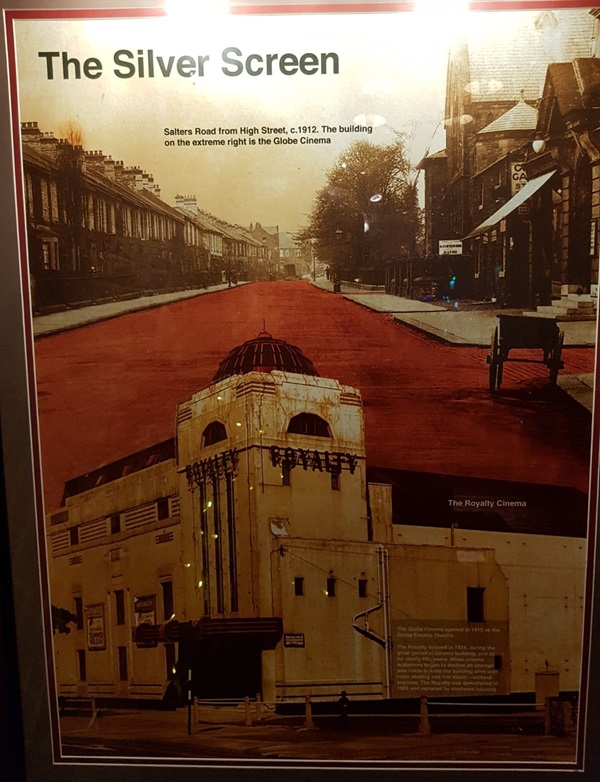
The text reads: The Globe Cinema opened in 1910 as the Globe Electric Theatre.
The Royalty opened in 1934, during the great period of cinema building, and stood for nearly fifty years. When cinema audiences began to decline an attempt was made to keep the building alive with roller skating and live music – without success. The Royalty was demolished in 1985 and replaced by sheltered housing.
A print and text about the post office.
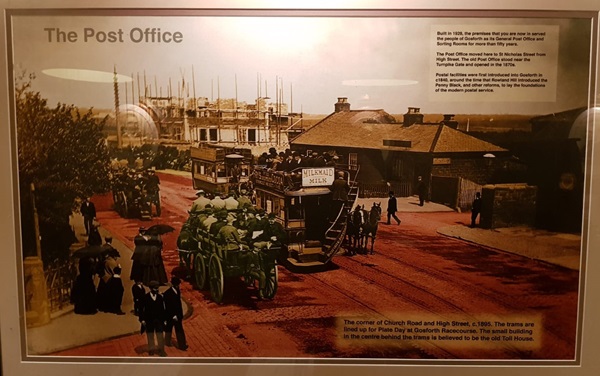
The text reads: Built in 1928, the premises that you are now in served the people of Gosforth as its general post office and sorting rooms for more than fifty years.
The post office moved here to St Nicolas Street from High Street. The old post office stood near the Turnpike Gate and opened in 1870s.
Postal facilities were first introduced into Gosforth in c1840, around the time that Rowland Hill introduced the Penny Black, and other reforms, to lay the foundations of the modern postal service.
The corner of Church Road and High Street, c1895. The trams lined up for Plate Day at Gosforth Racecourse. The small building in the centre behind the trams is believed to be the old toll house.
A photograph of George Stephenson.
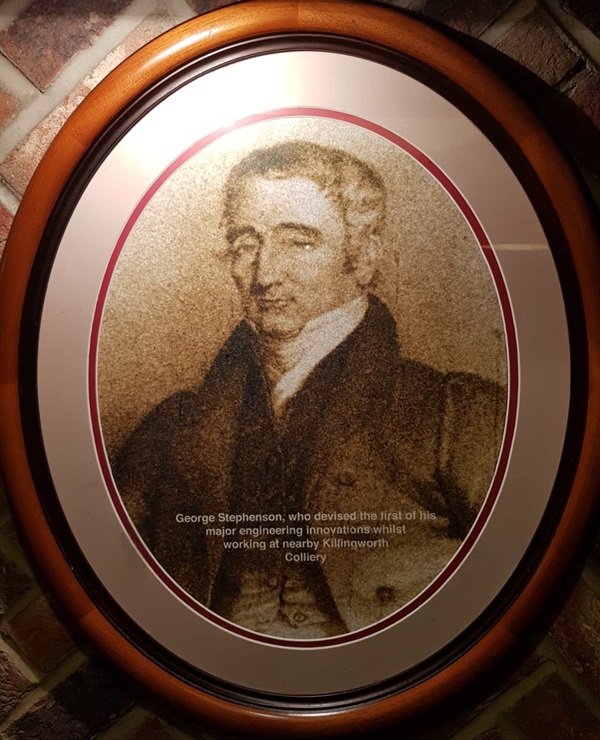
He devised the first of his major engineering innovations whilst working at nearby Killingworth Colliery.
Prints and text about the history of Gosforth.
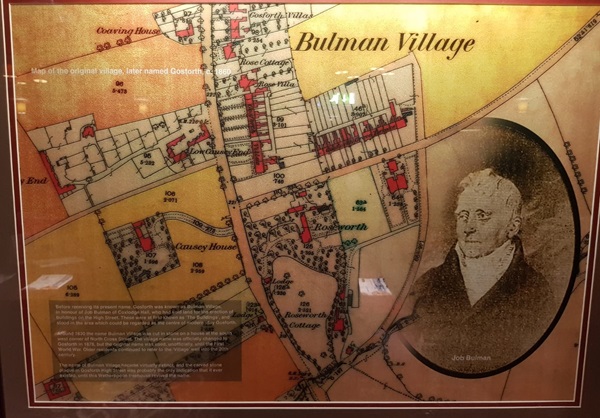
The text reads: Before receiving its present name, Gosforth was known as Bulman Village, in honour of Job Bulman of Coxlodge Hall, who had sold land for the erection of buildings on the High Street. These were at first known as ‘The Buildings’, and stood in the area which could be regarded as the centre of modern day Gosforth.
Around 1830 the name Bulman Village was cut in stone on a house at the south west corner of North Cross Street. The village name was officially changed to Gosforth in 1878, but the original name was used, unofficially, until the First World War. Older residents continued to refer to the ‘Village’ well into the 20th century.
The name of Bulman Village became virtually extinct, and the carved stone plaque in Gosforth High Street was probably the only indication that it ever existed, until this Wetherspoon freehouse revived the name.
External photograph of the building – main entrance.
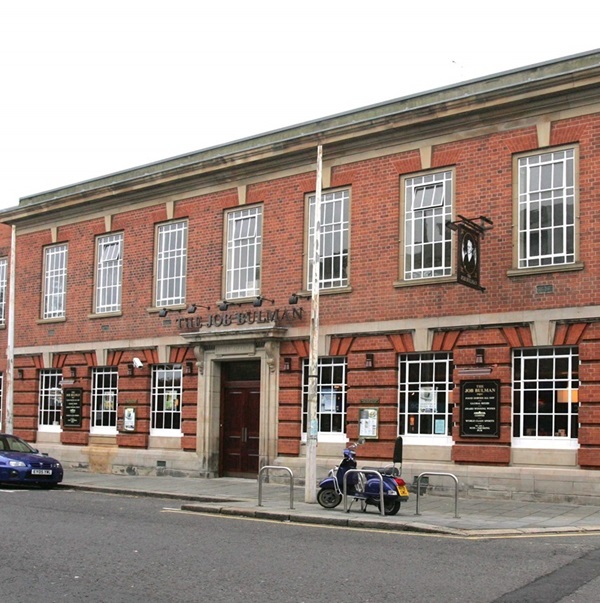
If you have information on the history of this pub, then we’d like you to share it with us. Please e-mail all information to: pubhistories@jdwetherspoon.co.uk